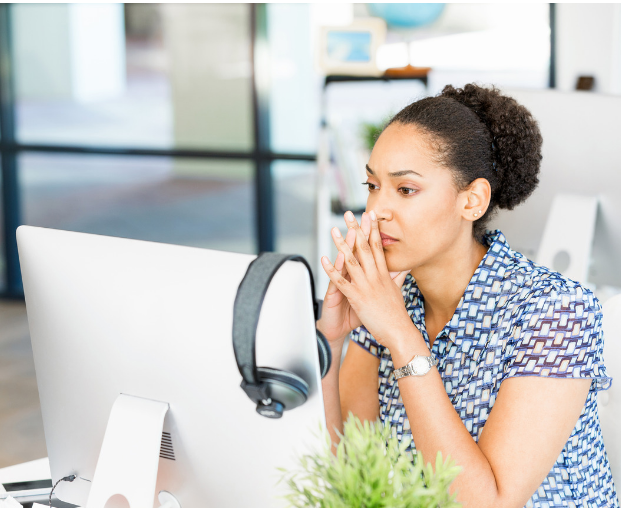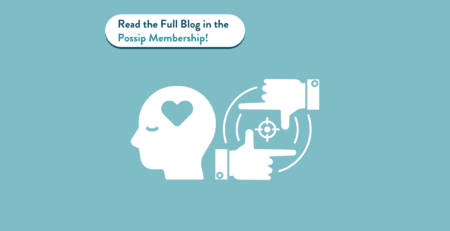In-person or virtual learning. As schools begin to re-open, families around the country are faced with a not-so-easy decision—whether or not to send their kids back to the classroom.
Through our Weekly Possip surveys, we’ve been hearing from parents for weeks about how stressful this decision is. Parents are feeling a lot of pressure to make the “right” decision. So, today, we’re talking with parents across the Possip network, who’ve made, or are making this decision for their children.
There are so many factors to take into consideration when making this decision, which we’ll talk more about. But in speaking to parents, there was one big takeaway– there is no one right decision. If the choice works for your family, it’s the right choice.
Nevertheless, these decisions are hard and parents feel a lot of pressure. And re-opening plans look so different, district by district, state by state. So, for those of you who will be facing this decision, we developed a framework to help you think through the decision.
The Parent Decision: Things to Consider
-
- consider your family’s health; is anyone in your family or extended family in a high risk group?
- consider your child’s needs (academic and social)- has virtual learning been successful or not? do they need additional support during the typical school year? do they have developmental goals that require they be in school?
- consider YOUR needs (professional and mental health)
- consider what your school or district is offering and your knowledge and comfort with that
- ask your child’s school about their Return to School Plan
- ask them what exact steps they are taking to keep kids and grown ups safe and healthy
- ask them what specifically they are doing to focus on children’s social emotional health during this time
- ask them about their plans when cases happen and “what if’s”
- ask your child’s school about their Return to School Plan
- Consider the expert advice and community specifics
- What does your pediatrician recommend for your child specifically?
- What is the local/state/public health guidance?
- How are case rates in your city? County? Neighborhood?
- Are cases rising? Or declining?
At the end of the day, you are the expert as it relates to your child. And while there are a ton of factors to consider, it’s also okay just to rely on your instinct, and go with your gut. I found this advice below from parents in our network super helpful when making my own decisions for my children.
In-Person or Virtual Learning: A Few Testimonials
Steph, Jacksonville, FL: Chose In-Person
We didn’t really have a choice because we are both educators and our schools required us to be in-person. However, we were okay with going in-person with our kids because we trust the schools they attend. We also don’t have direct contact with family members that are vulnerable and we ourselves are not vulnerable. It was definitely scary, but now that we are over a month in we have been very fortunate to say we haven’t had any major exposures. Before we went back to school, we were very honest and direct with Maxwell (our Kindergartener) about why school would look and feel different. We made sure he understood how to wear his mask and why.
Shani, Nashville, TN: Chose Virtual
My kids’ school is reopening in phases – first for students who have additional learning needs, then for essential workers, then for those who choose to return. Our school has asked families to opt to stay virtual if it has been successful thus far. And virtual learning has been working well for our family. Our kids’ school has done a great job with it – and as 2 educators so we feel prepared to support our kids.
Our other consideration was risk. My husband and I are both over 40. I’m Black and there has been a disproportionate impact of COVID on Black and Latino communities. Additionally, we’ve known quite a few people in our close network who have been affected by COVID. And since our kids are growing academically, the decision to remain virtual made sense. We also ensure they get social time with daily playdates or other interactions with kids.
Cate, Pittsburgh, PA: Chose In-Person
We chose to send our kids back in person full time because the school was able to show us clear evidence they could follow CDC guidance, and we did not have any body in our family in a high risk category. Our youngest had already been back in daycare for 2 months and it has gone great. Our community spread is on the lower end, although still obviously concerning, but my friends who were doctors felt very much that our school had a very solid (32 page!) plan and so far they have honored it to the letter. Finally, while of course not legally binding, our head of school laid out a “community contract” of sorts that basically asks us all not to take part in high risk behavior, travel to hot spots or go unmasked in public.
Sara, Denver, CO: Chose Virtual
We actually made different decisions for our different children based on their individual needs and school situations. For our 6th grade daughter, we’ve decided to remain Virtual until at least January.
For our public middle school, “going back” looks a lot different. Because of guidelines provided by public health officials, students who return to school will continue to do virtual learning, but in the classroom. To limit exposure for both students and teachers, the traditional switching of classes, socializing and extracurriculars won’t take place. And because virtual is going well for our daughter, we’ve decided to keep things “as is” for now. The reasons we would want her back in school – ability to socialize, sense of normalcy, live teaching– just aren’t there in this model.
Gina, Houston, TX: Chose In-Person
Our district offered the option of both in-person and online learning, with the opportunity to move to on-line at any point (if you initially chose in-person). We decided to send all three of our children back to school for in-person learning.
When our schools opened up, they did so with careful adherence to physical distancing guidelines and mask-wearing. After 25 weeks at home (and in front of screens), I felt the risk of my children being exposed and potentially infected by the virus was outweighed by their need for in-person learning.
Our decision to send our children back to school was also impacted by the fact my husband and I both work. In our experience, managing a child’s on-line learning truly requires a parent or facilitator to be available for assistance. Because we are not in the position to hire a helper or participate in a co-op, we knew that we would not be able to give our children the hands-on help they needed and fulfill work obligations.
Both virtual and in-person learning have their draw-backs, and both have benefits. I would hope any parent making this decision knows that there is not a “right” or “wrong” decision. In every aspect of a child’s education, parents have to look at the data available from trusted experts, the pros and cons of a learning environment, and weigh all of that against their child’s needs and their available resources.
Joyce, Oakland: Virtual, Choosing Hybrid
Our school is considering moving to a hybrid mode for interested families, which we would probably do because we don’t live with anyone who is immuno-compromised. I appreciate that our governor laid out clear directives for when it was safe to think about returning (off the State watchlist for two weeks). The school has been mindful about getting feedback from the parents, in terms of our comfort level and what our needs are, and developing and communicating a plan for safely returning to school, so I have implicit trust that they are moving forward with the mindset that community health and academic equity (there will be no substantive lessons given in-person in fairness to families who remain home) are paramount.
So as you read this we want to encourage you – there’s not a wrong decision. This is a time where we do the best we can with what we have.





